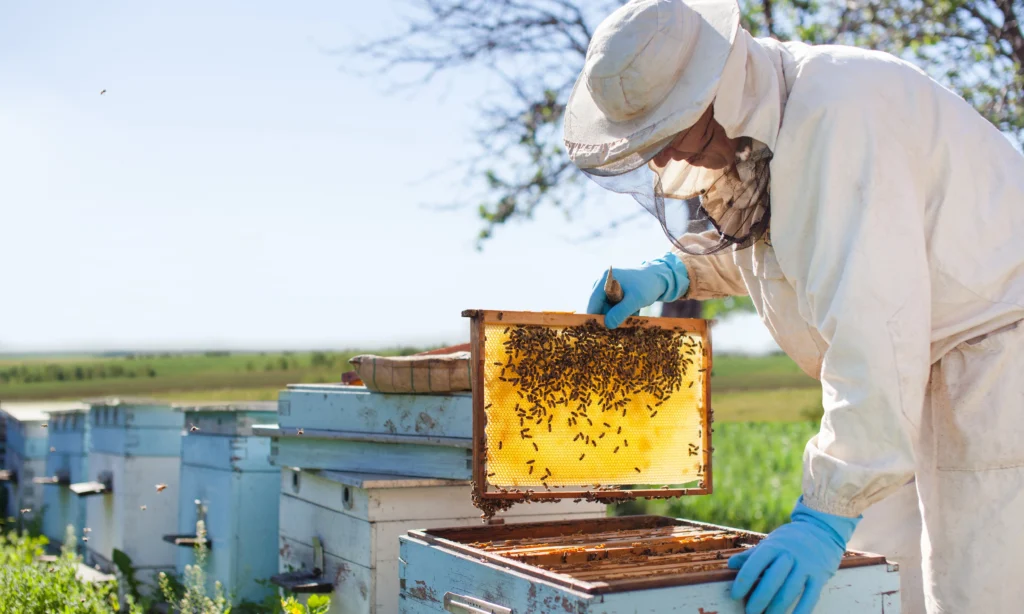Every beekeeper knows that a hive isn’t just a box — it’s a living environment that shapes the health, productivity, and behaviour of the colony inside. Two of the most popular hive types today are wooden beehives and thermal beehives. Both play essential roles in beekeeping, offering unique benefits depending on your climate, goals, and management style.
Let’s explore how these two hive types differ, and how each can contribute to building stronger, more productive colonies.
Wooden Beehives: The Traditional Choice That Still Shines
Wooden beehives have been around for centuries, trusted by generations of beekeepers for their simplicity, reliability, and natural design. They’re typically made from pine, cedar, or cypress — all known for being durable and breathable.
Advantages of Wooden Beehives:
- Natural Insulation: Wood naturally helps regulate temperature, keeping bees comfortable in both warm and cool conditions.
- Healthy Ventilation: The natural grain of wood allows airflow, preventing excess humidity and condensation.
- Eco-Friendly Construction: Wooden hives are sustainable, biodegradable, and environmentally safe.
- Familiar Structure: Most beekeeping accessories and frames are designed to fit wooden boxes perfectly.
However, wooden hives do need regular care. Beekeepers should paint or wax the exterior to protect against moisture and rot. With a little maintenance, a good wooden hive can last for many years and provide a safe, natural environment for the bees to thrive.
Wooden beehives are often preferred by traditionalists who believe bees behave more naturally in wooden enclosures — just as they would in a hollow tree trunk in the wild.
Thermal Beehives: The Modern Evolution in Hive Design
While wooden hives rely on nature’s material, thermal beehives are engineered for modern conditions. Made from insulated materials such as high-density polyurethane or polystyrene, these hives are designed to offer maximum protection against temperature extremes.
Advantages of Thermal Beehives:
- Exceptional Insulation: Bees remain comfortable in all seasons, even during Australia’s scorching summers or cool winter nights.
- Energy Efficiency: Bees spend less energy regulating hive temperature, allowing them to focus on foraging, brood rearing, and honey production.
- No Condensation: The sealed design prevents moisture buildup, keeping the hive clean and healthy.
- Minimal Maintenance: Thermal hives don’t require painting or sealing and resist rot, pests, and cracking.
Thermal hives are ideal for beekeepers who want less maintenance and better temperature control — especially in regions where heat stress or rapid weather changes can weaken colonies.
How They Compare: Tradition Meets Innovation
| Feature | Wooden Beehives | Thermal Beehives |
|---|---|---|
| Material | Natural wood | Polyurethane / Polystyrene |
| Insulation | Moderate | Excellent |
| Durability | Long-lasting with upkeep | Long-lasting, low maintenance |
| Weight | Heavier | Lightweight and portable |
| Maintenance | Needs painting/sealing | Almost maintenance-free |
| Eco-Friendliness | 100% natural and biodegradable | Synthetic but reusable and durable |
Each type has a distinct purpose. Wooden beehives appeal to those who appreciate tradition and natural craftsmanship. Thermal beehives cater to those who prefer efficiency, insulation, and modern innovation.
Some experienced beekeepers even mix both — using wooden brood boxes for their natural feel and thermal supers for better honey storage conditions during peak heat.
Which Hive Is Right for You?
The best choice depends on your local climate and management style. In hot and dry regions, thermal beehives often perform better since they protect colonies from extreme temperatures and help maintain consistent brood health.
If you live in a mild climate or value traditional methods, wooden beehives remain a fantastic option. They offer natural ventilation and blend perfectly with most standard hive equipment.
The key is understanding your bees’ needs and how each hive type contributes to their comfort and productivity. Remember — a stable, well-regulated hive temperature directly influences honey production and overall colony strength.
Why Quality Matters
Regardless of the hive material you choose, quality craftsmanship is essential. A poorly built hive can let in drafts, pests, or moisture — all of which disrupt the colony. Investing in durable, well-constructed beehives ensures your bees stay safe and active throughout the year.
Well-built hives also make inspections easier, reduce stress during handling, and extend the lifespan of your beekeeping equipment.
Final Thoughts
Both wooden and thermal beehives have their strengths — one rooted in tradition, the other in modern design. Wooden hives offer a timeless connection to nature, while thermal hives bring innovation and long-term stability.
Choosing the right one isn’t about which is better overall — it’s about which is best for your bees, your climate, and your management approach.

